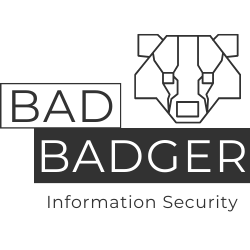It started with a simple alert that would be easily overlooked—a sudden, unexpected spike in API activity from an IAM role that should have been dormant. No alarms were blaring (yet), and no critical systems had failed, but something felt… off. This is where instincts kick in.
This is how a routine security review turned into a full-blown incident response operation, showcasing automation, security architecture, and leadership in action. More importantly, it’s a reminder that the right security mindset makes all the difference.
The First Signs of an Intrusion
A newly provisioned EC2 instance began making unusual API calls, assuming a high-privilege IAM role that hadn’t been used in weeks. The first alert came from the EDR, detecting an anomalous AssumeRole request from an IP block outside of the usual geofence.
🚨 Key Takeaways:
- Well-tuned EDR and native tools, like AWS GuardDuty & CloudTrail, are essential for detecting real-time identity-based attacks.
- IAM roles with excessive privileges can become stealthy attack vectors.
- Collaboration with operations teams is essential to ensure InfoSec and Security Operations teams know what is expected and that communication lines are open when anomalies occur.

Rapid Response: Isolating the Threat
At this point, response time is everything. The incident response playbook kicked in:
AWS Lambda Automation: A triggered Lambda function revoked temporary session tokens for the IAM role in question. -> IAM Role Quarantine: An automation workflow (AWS Systems Manager) removed the role’s high-risk permissions, preventing further escalation. -> CloudWatch Alerts & SNS Notifications: Real-time alerts were sent to the Security Operations team via Slack and email.
🚨 Key Takeaways:
- Automated (carefully designed) security responses reduce manual overhead and speed up containment.
- Real-time SIEM integration is critical for live incident detection.
- Security leadership means owning the response and driving a structured, methodical approach.
- Communication with key stakeholders throughout the phases of IR ensures we are all working with the same information as soon as possible.

Tracing the Attack Path: How Did They Get In?
No attack happens in isolation. Once the immediate threat was contained, it was time to trace the initial compromise.
Investigation Workflow:
- CloudTrail Log Analysis: Reviewing
sts:AssumeRoleevents to trace back to the compromised API key. - VPC Flow Logs & Network Insights: Identifying the EC2 instance’s outbound connections.
- S3 Access Logs: Ensuring no sensitive data exfiltration occurred.
🚨 Key Takeaways:
- SIEM logs, along with IAM Access Analyzer & CloudTrail insights help uncover lateral movement within cloud environments.
- Compromised credentials remain one of the most exploited attack vectors in cloud security.

Lessons Learned & Security Hardening
With the attack mitigated, it was time for post-incident review and proactive defenses.
Improvements Implemented:
- Improved Service Control Policies (SCPs) restricting role assumptions from outside approved AWS accounts is once again a key requirement.
- Stronger IAM Guardrails: Enforcing least-privilege policies via IAM Access Analyzer.
- Automated Key Rotation: Using AWS Secrets Manager to eliminate stale credentials.
🚨 Key Takeaways:
- Proactive security engineering prevents incidents before they happen.
- Security architecture must evolve based on real-world threats.
- Security leadership requires clear communication, documented playbooks, and continuous learning.
Final Thoughts: The Role of InfoSec in AWS Defense
This wasn’t just a one-off event. Security threats evolve, and so should security engineers. Being prepared isn’t about having one good response—it’s about building a culture of proactive defense.
This is what success looks like in this role:
- You automate responses to security threats before they escalate.
- You design secure architectures that prevent privilege escalation.
- You lead security efforts, ensuring every stakeholder is on the same page.
Security is not just about technology—it’s about strategy, execution, and leadership.
Do you have the support you need to stop this attack? What is getting in your way? Let’s talk.

